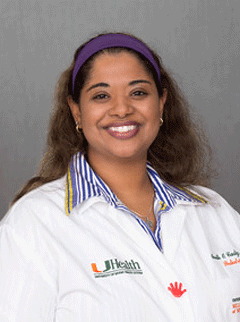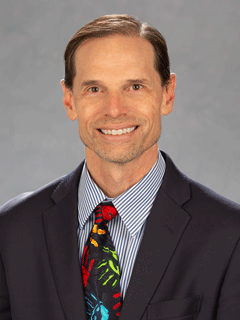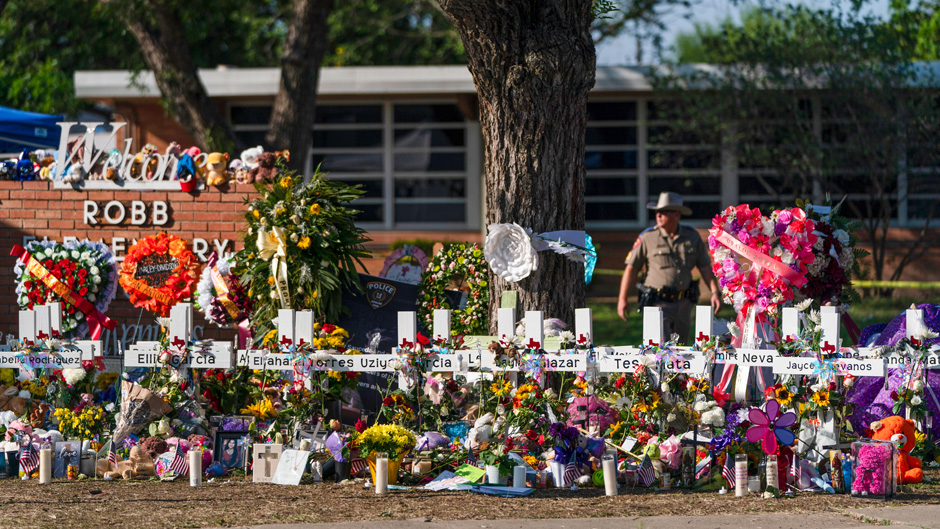Across the United States, more than a third of children live in homes where guns are present, the American Academy of Pediatrics (AAP) reports, which increases the likelihood for firearm-related accidents and suicide. A Pew Research study released in 2021 indicated that 40 percent of adults in the United States live in homes with a gun.

With the number of firearms present in the U.S. today, Dr. Oneith Cadiz, an assistant professor of clinical pediatrics at the University of Miami Miller School of Medicine, said she was not surprised to learn that the leading cause of child and adolescent deaths from 2019 to 2020 was gun violence. In the past three years, Cadiz said, the COVID-19 pandemic has brought a higher sense of uncertainty and isolation that often makes people want to buy a gun because they think it may bring them more security.
“Since 2019, both access to firearms and the incidence of mental health disparities have increased,” said Cadiz, who is also director of the Injury Free Coalition for Kids of Miami. “But without intervention, we cannot expect change … and that’s why we continue to see these kinds of horrible events.”
Cadiz said that she has always believed in legal reforms—like stronger background checks before people can buy guns, as well as encouraging everyone to practice safe firearm storage at home. Many of these suggestions are also supported by the AAP.
Survivors deal with guilt, depression
In the clinics where she treats children and teaches aspiring doctors, Cadiz has seen the destructive impact of gun violence on young victims and on children who have lost siblings and family members from shootings. Cadiz is also a parent who lives in Parkland, Florida, and has friends and neighbors whose children were at Marjory Stoneman Douglas High School in 2018 when an expelled teenage boy brought an assault rifle on campus and killed 17 people, wounding 17 others.
She said direct experience with gun violence is difficult for anyone to recover from and typically includes survivor guilt, as well as anxiety and depression. Therefore, she spends extra time talking with patients who have experienced gun violence to understand what kind of support they might need and then connects them with a mental health provider.
“Kids are forever changed by this,” she said. “But it’s our job to identify the type of help they need, and to provide them with tools to deal with the emotions they have, and to help them reassimilate into everyday life. Because coming out of a situation with gun violence, they are constantly on edge.”
Also, as part of her well child exams, Cadiz makes a point to ask about weapons in the home, something she and the AAP encourage all pediatricians to do. In particular, Cadiz suggests parents store guns in locked safes without ammunition. She even offers gun locks to families provided by the Injury Free Coalition for Kids.
“We are trying to make it part of the culture, just like when we ask kids about what they eat at an exam,” she said. “Are we doing a better job? Yes. Could we do even better? Yes.”
One positive development that Cadiz said she has seen as a result of the increase in gun violence is a greater emphasis on mental health in medicine. Now, she hopes that lawmakers will respond with stronger funding for these resources.
“We’ve reached the point where the victims far outnumber those who are committing these crimes,’’ she said, “so we need to focus our efforts on the mental health support needed for both sides.”
Techniques needed to improve safety
Many of her colleagues, who treat children’s mental health, side with Cadiz.
The horrific mass shootings in Buffalo, New York, and Uvalde, Texas, “challenge us as a society,” said Jeffrey P. Brosco, professor and associate chair of the Department of Pediatrics and associate director of the Mailman Center for Child Development.

Noting that the nation has dramatically reduced the number of deaths from motor vehicle accidents over the past two decades, he called for using the same techniques to improve gun safety and to save thousands of lives.
“The public health research is clear that when a nation reduces access to guns, children and their families are safer,” Brosco said.
Alan Delamater, a clinical child and adolescent psychologist at the Mailman Center, agreed.
“The most important factor to explain the fact that guns are the leading cause of death now among children and adolescents is the sheer number of guns available and the easy access that people, including kids, have to them,” he explained.
Another disturbing fact: Gun violence disproportionally affects young adults, males, and racial and ethnic minorities, said Viviana Horigian, a professor of public health sciences at the Miller School.
“Of all firearm deaths in nearly two dozen populous, high-income countries, 82 percent occur in the U.S. And 91 percent of children killed by firearms in this group of nations are from the United States. How is this possible?” Horigian said, citing statistics from the American Public Health Association Fact Sheet and a 2015 American Journal of Medicine articlecomparing violent death rates across the world.
She called for implementing established public health measures to help reduce the problem of gun violence, such as defining and monitoring the issue, identifying risk factors, developing and testing interventions, and executing widespread dissemination and adoption of these interventions.
“You might be surprised, but this public health model—one we follow for any other disease—isn’t followed for gun violence,” Horigian said. “For example, it was just recently that Congress authorized dollars for research on this problem. Without adequate research, we won’t know what works.”
After Columbine, Sandy Hook, and now Uvalde, “if we haven’t achieved our tipping point yet, will we?” asked Judy Schaechter, professor emerita and former chair of the Department of Pediatrics at the Miller School, who is also a longtime advocate of preventing gun violence. Schaechter is now the president and chief executive officer of the American Board of Pediatrics.
Schaechter offered the following gun safety tips for keeping children safe.
- If you have children and a gun at home, lock the gun away and store the ammunition in a separate locked location.
- If your children visit someone else’s home, just as you might ask if there will be an adult present or if there is a dog in the house, ask if there are guns and ask how they are stored.
- If someone you know, such as a family member or friend, is a gun owner and might be at risk because of mental health concerns, try talking with them about safe storage or removal of firearms. You might offer to store the guns for a period until your friend is better. Studies suggest that people are more likely to accept this suggestion when it comes from another gun owner.
Also, June 21 is ASK Day, which stands for Asking Saves Kids, Cadiz said. It is an opportunity to remind parents and caregivers of the importance of asking about guns in the home to prevent unintentional firearm injuries. A question as simple as, “Is there an unlocked gun in your house?” can save your child’s life.
— Robert C. Jones Jr. contributed to this report.

